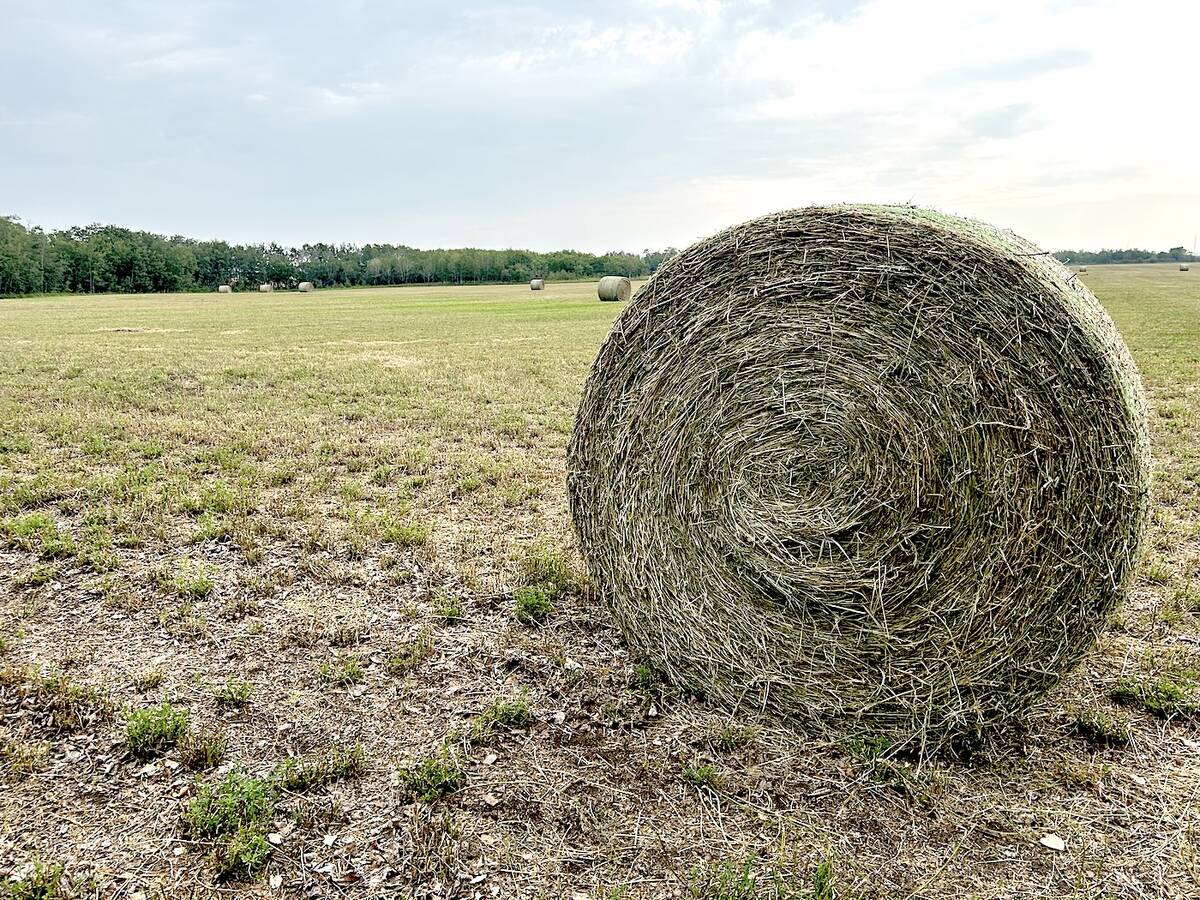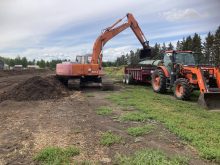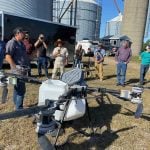Soybean acreage hit a record high in Manitoba this past growing season, and at least one Alberta producer sees that same potential for them here.
“We’ve been raising them for the last eight years (and) ever since that time, I’ve seen potential for these things in southern Alberta,” said Patrick Fabian, a seed grower who started with six acres of soybeans on his farm near Tilley.
Unlike Manitoba and Eastern Canada, soybean acres in Alberta have been growing slowly in the past decade, hitting a high of 6,500 acres in 2010 before a cool summer resulted in an acreage crash. It’s now hovering around the 4,000 mark, but consistently strong performance in southern Alberta could see that number grow.
Read Also

Alberta has adequate feed supplies going into winter
Hay yields across Alberta were varied, but one expert says feed supplies are in strong supply for Alberta producers for the upcoming winter.
“Soybeans performed very well this year,” said Fabian. “We’re starting to get a track record of consistency where our producers are seeing some decent yields that are translating over to good returns.”
Viable cropping option
This year, typical yields ranged from 38 to 56 bushels, said Fabian, with some producers breaking the 60-bushel mark.
Yields tend to be higher in the irrigation districts, where the majority of Alberta’s soybeans are grown, but a Ponoka producer trying soybeans for the first time saw yields of 35 bushels an acre — about average for a first-time grower. “We tell our first-time growers to expect 40 bushels an acre,” said Fabian. “More experienced growers get around 50 to 60.”
Between solid yields and good prices, soybeans are becoming more attractive for producers who are looking for different cropping options for their rotations.
“Canola has been the golden child for many producers,” said Fabian. “However, in recent years, disease and insect pressure has become so severe that a lot of producers’ bottom lines have been eroded.
“Producers are always looking for a viable alternative to give them different cropping options.”
Shorter-season varieties have been the driver for Manitoba’s soybean surge — which hit a whopping 1.08 million acres this year. But Manitoba’s warm nights create a “different dynamic” in that province and growers here need varieties that can prosper when temperatures drop below 10 C – as it frequently does during Alberta’s growing season, said Fabian.
“That’s problematic for soybeans,” he said. “If the temperature drops much below 10° at nighttime, the plant tends to stall off and stay almost dormant for two days until it gets going again. That can impact yield.”
Breeders are working on new varieties that are better suited to Alberta’s growing conditions, with good results so far, according to Fabian.
“We’re getting more every day. There are a number of varieties that would have the maturity available.”
Shorter-season varieties will expand soybean acreage into new parts of the province, he predicted.
“As varieties are getting shorter seasoned, we’re able to go farther west and farther north with them,” said Fabian. “But right now, we need the proper growing conditions to make sure that the people who grow soybeans have a success every time.”
Growing markets
Southern Alberta producers may be able to grow soybeans. But can they sell them?
It seems so. They’re fetching about $12 a bushel and soybeans are “easier to move and market than barley,” said Fabian.
“Marketing has not been a problem in all the years I’ve grown them. We’re seeing more opportunities open up every year.”
Parrish and Heimbecker in Medicine Hat now has dedicated bin space for soybeans, making it one of the only local outlets in southern Alberta that handles soybeans.
“We don’t have to look any longer at shipping them to Manitoba and down into the States,” said Fabian.
But there’s opportunity for growth in local markets as well, especially as feed. In 2012, Alberta imported 120,000 tonnes of American soymeal valued at $54 million, with Alberta livestock producers paying around $95 a tonne above the U.S. Midwest price.
“Why, when we could have that product processed right here in Alberta?” said Fabian. “If we were able to get that market established here, that would make the livestock industry that much more lucrative.”
A soybean crusher operating west of Lethbridge has set up shop, crushing Alberta soybeans and selling the oil and meal locally — and that’s a good sign, he said.
“I am very excited about the future of soybeans in southern Alberta and, in time, all throughout Alberta as new varieties are developed. This could usher in a whole new era of value added for our Alberta agribusiness industry.”














